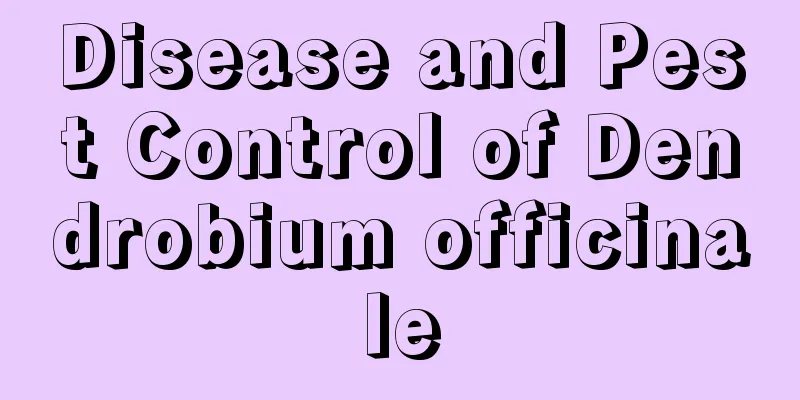Disease and Pest Control of Dendrobium officinale

1. Black spotWhen the disease occurs, black spots will first appear on the young leaves with a little yellow around them, and then they will slowly begin to spread to the leaves. Sometimes, in severe cases, the black spots will form flakes, causing greater damage to the leaves and causing them to wither and fall off. Prevention and control methods: Generally, the disease will begin to appear in early summer. Then we need to use some methods to prevent it. The most commonly used method is to choose some appropriate pesticides for spraying, which can achieve good results. 2. AnthraxThis disease first harms its leaves and tender stems, causing them to easily develop small black spots, which usually occur from January to May. Prevention and control methods: If you want a good prevention and control method, you can usually just spray it with medicine. It takes at least 2 to 3 times to achieve the ideal effect. 3. Vector-borne diseasesThis disease is also one of the main diseases. It usually exists on the leaves of the entire plant, causing the leaves to be covered with a dark powdery substance, which prevents the leaves from metabolizing and causes the plant's growth to stagnate. Prevention and control methods: Generally, dilute and mix the carbendazim, and then spray it 1 to 2 times with a spray. 4. Philippine shield scaleIt mainly lives on the edges of the leaves or on the back of the leaves of the plant. Then they start to continuously suck the juice from the plant, which causes the plant to lack nutrients and eventually prevent it from growing normally or even die. Prevention and control methods: This pest usually reproduces in late May, so we should use some special pesticides to spray it at this time, the effect will be better. However, if the amount is small, you can burn its old branches and leaves in a concentrated manner, which is also a good method. 5. SnailThis is also a common pest on plants. It usually hides secretly on the back of leaves and then nibbles them, sometimes the stems are also damaged. The worst thing is that it can happen many times within a year and is very harmful. Prevention and control methods: We can place some baits for hunting, or we can sprinkle some quicklime around the planting areas. |
<<: Disease and Pest Control of Rhododendron yunjinensis
>>: Pest and disease control of yellow crocus
Recommend
What flowers are suitable for growing indoors in dry conditions during winter?
1. Chlorophytum comosum Among many green plants, ...
Does kumquat like water? Is it a water-loving plant?
Does Kumquat like water? Kumquat likes water and ...
What to do after the lilies fade
1. Prune the remaining flowers After the lilies h...
Can wood ash be used as fertilizer?
Wood ash as fertilizer Wood ash can be used as fe...
How to grow crabapples and what should be paid attention to in potted plants
1. How to raise 1. Light: It is suitable for grow...
What is firecracker bamboo shoots?
What is firecracker bamboo shoots? Firecracker ba...
What is the best planting time for Amaryllis?
Which month is suitable for planting Amaryllis Am...
How does Feilong spend the summer?
1. Improve ventilation Flying dragons like modera...
Causes and treatments of yellow leaves of Hoya
1. Too much light 1.Reason: Ball orchid likes sof...
Can lucky bamboo be planted in soil?
Can lucky bamboo be planted in the soil? Lucky ba...
What are the advantages and disadvantages of eating figs?
1. Benefits Delaying aging Figs contain vitamin C...
How to manage blueberries in winter?
Blueberry is one of our common fruits , with very...
What to do if the axe-leaf peperomia grows too tall
Insufficient light Axe-leaf peperomia has the hab...
When does Lithops bloom?
How long does it take for it to bloom? Generally,...
Will the snake plant bloom? How to promote flowering?
1. Will it bloom? Tiger Skin Orchid will bloom, b...









